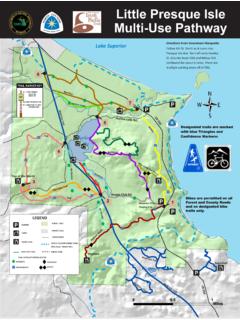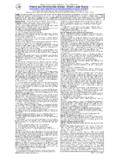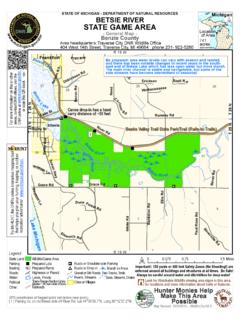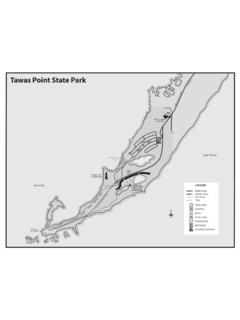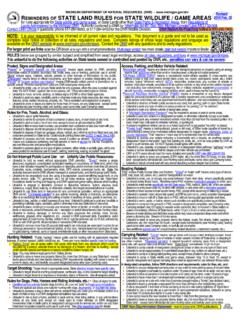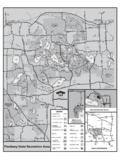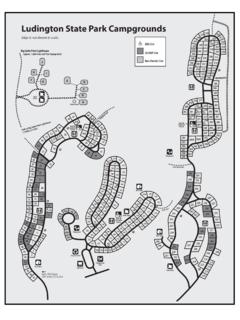Transcription of Wilderness Camping Summer - DNR - Department …
1 Great Lakes, Great Times, Great OutdoorsWilderness Camping SummerPorcupine Mountains Wilderness State Park33303 Headquarters RoadOntonagon, MI 49953(906) manual provides you with important information concerning Wilderness Camping in Porcupine Mountains Wilderness State Park from mid-June through August. It is essential that you and all members of your party read this information before your trip. After reading it, make a careful and honest evaluation of your party s abilities. Once you enter the Wilderness , you are responsible for yourself and your group s safety. Please be aware that Wilderness travel can be dangerous.
2 Wilderness Camping can be a very rewarding way to see and experience the park. Some of the park s most scenic areas are accessible only by hiking trail. The remoteness and serenity of Wilderness Camping is what draws many people to this area; however, those same reasons are why careful planning and preparation is Planning1. The first step in planning your trip is to determine the abilities of your group. You have a variety of trail options. When determining a route, consider the distance and terrain to a desired Wilderness campsites are first-come, first-served. Have an alternative route planned, especially if you visit in the busy months of July or Consider weather and other environmental factors when planning your Upon arrival to the park, stop at the Visitor Center to register your group and obtain a Wilderness Camping permit.
3 If after business hours, you may self-register at trailhead kiosks at Presque Isle, Lake of the Clouds, Summit Peak, and Park Headquarters. Fees are posted at these locations. For accuracy in information, in-person registration is information Camping is not permitted within a mile of any cabin, road or scenic area. Maximum group size is 6 persons. Bushwhacking and off-trail Camping are permitted. Use of minimal impact techniques is required. Campfires are allowed only in designated fire rings at established sites. Review the suggested equipment list. Make sure everyone in your party is properly leaving, always tell a relative or friend where you are going, your route and when you plan to return.
4 If there are any concerns about your return, persons can call the park headquarters at (906) 885-5275 to report any problems or Mechanical or Motorized VehiclesMotorized vehicles, wheeled carts, wheeled boat carriers and other mechanical devices are not allowed in the Wilderness . Mountain bikes are permitted only on established mountain bike on the TrailThe journey is not only about the destination. Enjoy the beauty and scenery of your travels, but also take the following into consideration and plan for an adventurous trails are rugged. You may encounter steep hills to climb and streams to cross (with or without a bridge), along with obstacles that may block the trail.
5 Always carry a map and compass and know how to use them. Trails are marked, but nighttime travel is not recommended. Be considerate of other people on the trail. Do not dampen the experience of Trail overlooking Lake of the on the trail: Let nature s sounds prevail by traveling in small groups, and avoid making excessive noise Pick up any litter you may drop or find Minimize trail impact by staying on designated trails, not cutting switchbacks and walking through muddy spots or puddles so as not to widen the trails Practice the Wilderness motto of Leave No Trace of your carried in with you, all drinking water should be boiled for one minute or filtered through a micron filter.
6 Some commercial chemicals or treatments may also are allowed only in designated metal fire rings at established sites. All wood must be taken from dead and down trees and PolesBear poles are provided at or near many of the established Wilderness campsites. See the Porcupine Mountains Back-country guide map for bear pole locations. If you stay at a site that does not have a bear pole all food and scented items must be stored in a bear-proof container or secured bags must be suspended at least 12 feet above the ground and far enough from the tree to prevent an animal from reaching or jumping on it.
7 Creativity often is needed because the right tree is difficult to find. Bear bags can be hung from a single tree, suspended between two trees, or by using multiple rope combinations. Practice before entering the haul out what you haul in, including all food scraps. Trash receptacles are provided at trailheads. It only takes a simple commitment to pack out all that is packed in, and to encourage others to do the same. Do not burn any garbage in the fire minimize waste, repackage food items into smaller, more easily packed containers. For example, repackage boxes of macaroni and cheese into one Ziploc -type bag and retain the directions.
8 Canned goods can be repackaged into doubled Ziploc -type bags. Do not carry glass bottles into the Wilderness . Reducing your waste prior to your trip not only saves on the amount at the end of the trip, it also makes your pack lighter on the trail. Dispose of Waste Properly Deposit solid human waste in catholes dug 6 to 8 inches deep at least 200 feet from water, camp and trails. Cover and disguise the cathole when finished. Pack out used toilet paper, diapers and hygiene wash yourself or your dishes, carry water 200 feet away from streams or lakes and use small amounts of biodegradable soap.
9 Scatter strained plenty of insects (especially from late May through the middle of July). Repellants, head nets and protective clothing may are not allowed in any state-owned buildings (except service dogs); they must remain on a 6-foot leash at all times and may not be left unattended at any Observe wildlife from a distance. Do not follow or approach them. Never feed animals. Feeding wildlife damages their health, alters natural behaviors, exposes them to predators and other dangers, and causes them to lose their natural fear of humans. Protect wildlife and your food by storing rations and trash securely.
10 Avoid wildlife during sensitive times: mating, nesting, or when raising BearsBlack bears normally are afraid of you and will leave in a hurry. If you see a bear near the trail, move away from it or turn back. Give bears with cubs plenty of Bear BehaviorA bear is studying you it stands on its hind legs to get a better view it waves its nose around smelling the air it makes low, non-aggressive grunting sounds A bear may be getting upset it clicks its teeth it gives a loud blowing sound A bear is telling you to leave when blows loudly makes short lunges and hits the ground or near by objects gives a bluff charge that stops short of youDo not confront or feed any bear.

